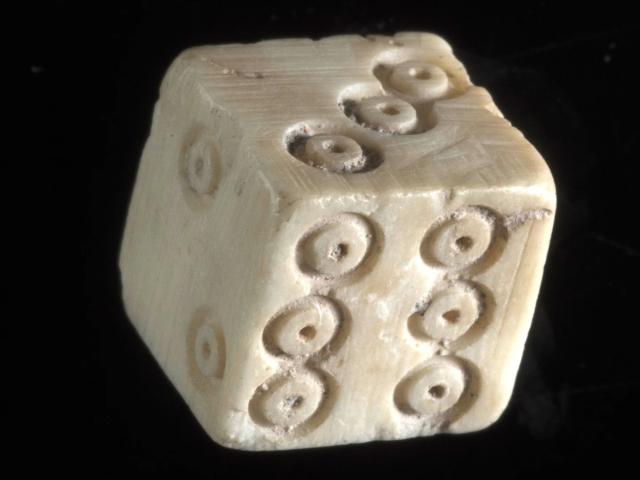In a significant archaeological find, researchers under the Israel Antiquities Authority have uncovered an ancient gaming die in the City of David National Park, near the historic Pool of Siloam. The discovery, dating back to the 13th century, sheds light on the leisure activities of past civilizations and underscores the continuous human connection to the region.
Historical Context and Discovery
Dice, as one of the oldest gaming implements known, have been used in various cultures worldwide, with evidence dating back to around 2000 BCE. The die found in the City of David, crafted from bone and featuring classic numbered engravings from 1 to 6, mirrors the design of modern dice and illustrates the timelessness of such gaming tools.
The excavation directors, Dr. Filip Vukosavović and Itamar Berko, noted the practical and cultural significance of bone in ancient craftsmanship. "Bone was not only abundant but also versatile, used in the creation of a wide array of daily items—from musical instruments and makeup utensils to dining and gaming implements," they explained. This context highlights the ingenuity and resourcefulness of ancient societies in utilizing available materials.
Bone gaming die uncovered in the City of David
— Saul of United (@Viatcheslavsos3) April 12, 2024
Dice are the oldest gaming implement known to man. Six-sided die, as the one uncovered in the City of David, dates back to about 2000 BCE https://t.co/lYVUMxUfX6
The Dice in Historical Leisure
The bone die, accurately dated to the Ayyubid period of the 13th to 14th centuries CE, represents the oldest gaming tool discovered to date. This period was marked by a rich tapestry of cultural and social activities, with leisure games playing a central role in daily life. The find at the Pool of Siloam, a site renowned for its archaeological richness, further illustrates the area's historical depth and the continuity of human activity over millennia.
Archaeological and Cultural Significance
The City of David remains a pivotal archaeological site, offering invaluable insights into the life and times of its ancient inhabitants. Each artifact unearthed here, including this ancient die, adds layers to our understanding of historical civilizations' cultural and social practices.
The Israel Antiquities Authority intends to feature this ancient die in an upcoming exhibition, providing the public with a unique window into the past. This exhibition aims not only to display an artifact but also to bridge historical cultures, showcasing the common threads of leisure and play that connect different ages and peoples.
Unearthing Roman Dice in the City of David - https://t.co/BQlskBjMZa @JewishPress pic.twitter.com/3K4ZZ77EZk
— JewishPress.com (@JewishPress) July 1, 2021
Conclusion
This discovery not only enriches our understanding of ancient leisure but also reinforces the City of David's status as a cradle of continuous human civilization. As we uncover more about our ancestors' lives, we gain a deeper appreciation for the shared heritage that shapes our present and future. The forthcoming exhibition promises to be a fascinating showcase of this historical continuity, drawing connections across time through the universal language of play.


